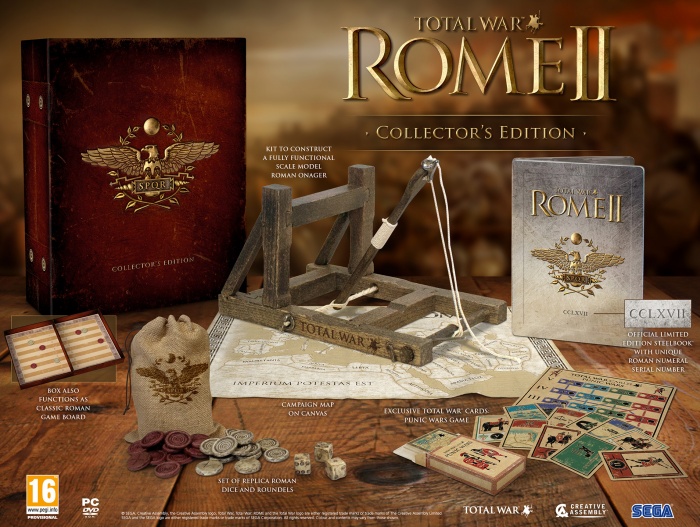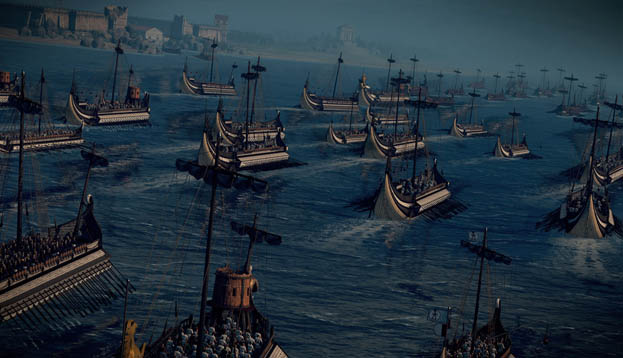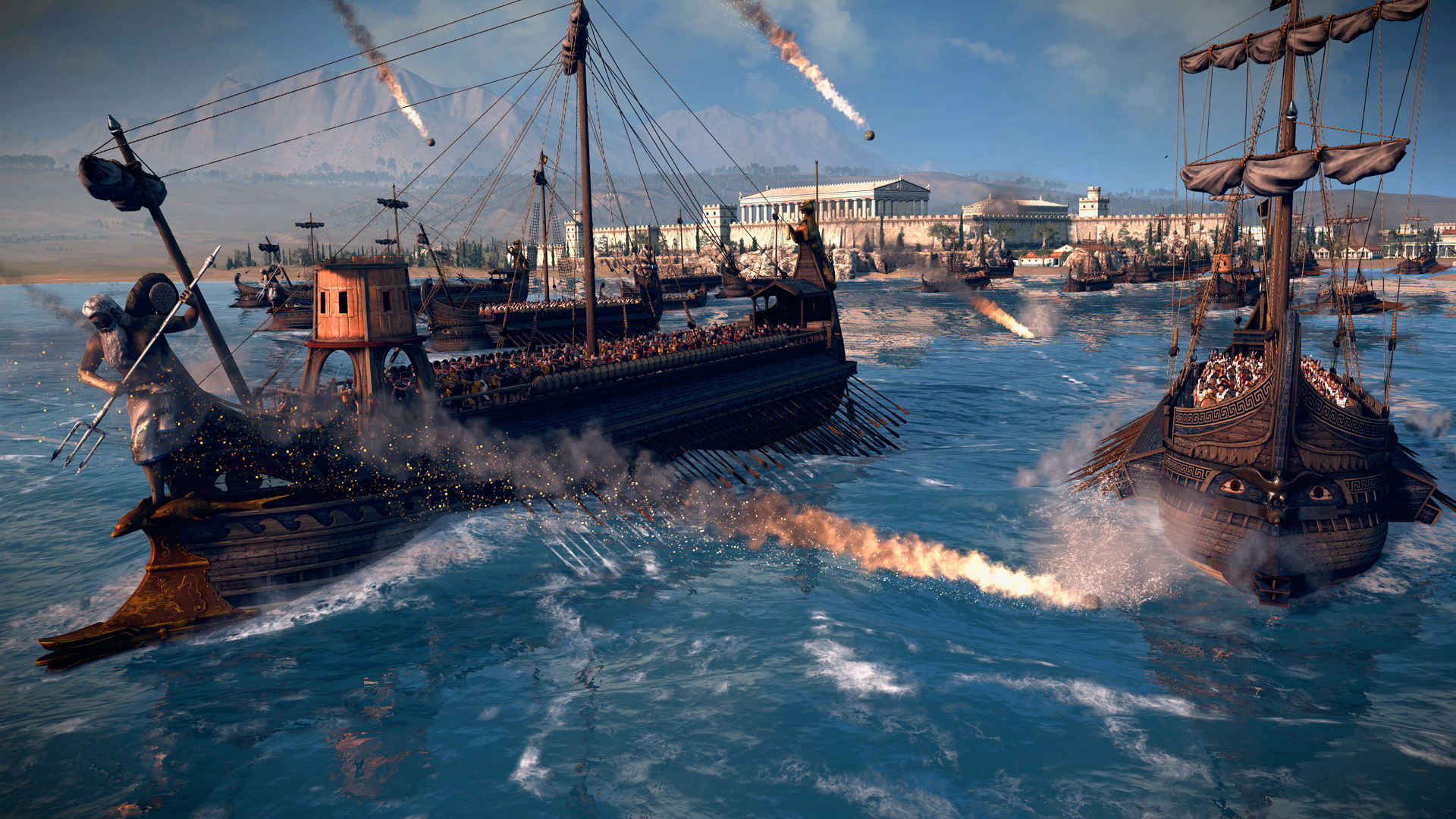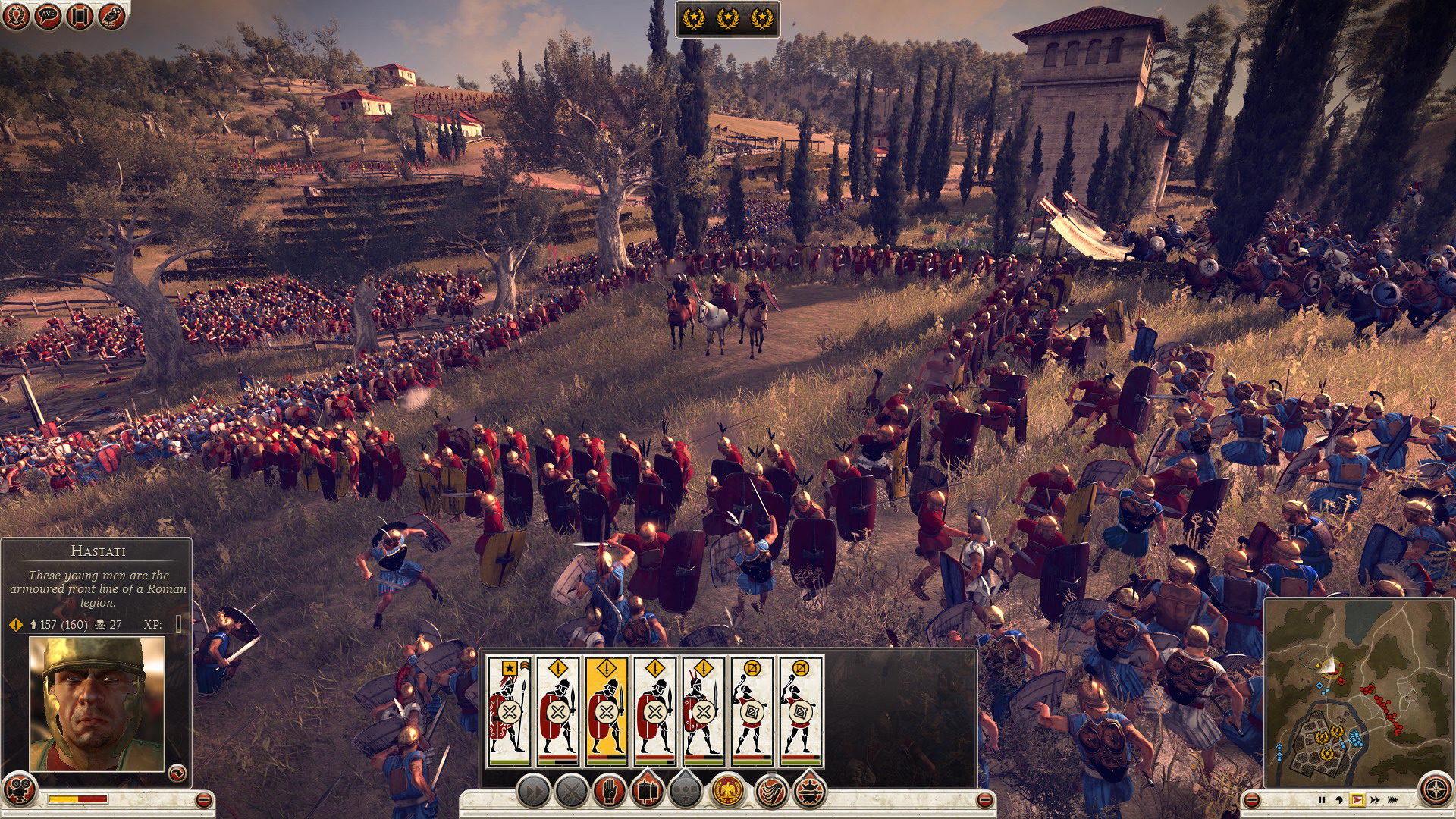Editor’s note: We are pleased to introduce veteran entertainment journalist John Gaudiosi as a new regular contributor to [a]list daily.
By John Gaudiosi
Sega increased The Creative Assembly’s production budget by 40 percent over Total War: Shogun II to develop Total War: Rome II, which the game maker promises will be its largest real-time strategy (RTS) game ever. Sega has also said that Rome II will have the biggest marketing budget in the history of the Total War franchise. The game is massive in scale with over 700 battlefield unit types to command and battles that feature 40 versus 40 with destructible environments based on real historical locales and armies.
The game begins at a couple hundred B.C. and then can unfold for centuries, depending on how players command their armies, strategize with politicians and build their empire. This process can go on for centuries within the game world, which has been authentically recreated from history books.
“We love the Roman time period,” said Mike Simpson, Studio Director at The Creative Assembly. “When we’re looking for a time period for a new RTS war game we look for technological change. It has to be some kind of technology race and the Roman period was very good for that. The Romans were great engineers and employed all sorts of advanced technologies at the time. We also look for a situation where there are lots of different factions, any of whom could have ended up winning. And the third thing we look for is cool content like the Roman Legion, horses, elephants, barbarians, catapults and all that type of stuff.”
Although the PC RTS field is not as crowded as it once was, in a way Sega will be competing with itself having released Relic’s World War II game, Company of Heroes 2, earlier this year. The Total War franchise has sold more than 3.4 million copies to date in the U.S., according to the NPD Group, and it has a global audience that has followed each new iteration and sequel. According to Sega, Total War: Rome II had over six times the number of pre-orders in its first official week compared to Shogun II, making it the fastest selling pre-ordered title in the series. Sega has been marketing the game early through discounts, free downloadable content and a limited edition version of the game that comes with a replica catapult.

“This game sits in its own place in the RTS genre and it’s firmly set in the real world, so you’re not playing against a gaming set of rules where you know that if you build that particular thing it will beat that particular thing,”said Simpson. “Real-world tactics like outflanking, surprising and ambushing actually work. You don’t need to spend time feeling out exactly how to play the game. If you just do things which seem sensible from a military point of view, they’ll work in the game. Our game is unique in that respect.”
Total War has always been rich in history. Back in 2004, the History Channel used the original Total War: Rome game for a 13-part series called Decisive Battles, which used the video game footage to tell the story of real battles during the Roman Empire. With Total War: Rome II, Sega has partnered with MacMillan Publishing and author David Gibbins for Detroy Carthage, the first in a series of historical adventure books based on the new game. The October hardcover is set in Carthage, 146 B.C. and tells the story of Fabius Petronius Secundus, a Roman legionary and centurion who rises to power.
The Creative Assembly, which Sega bought back in 2005, has been pushing new proprietary technology called the Warscape Engine with each new game. Simpson said the team has changed more in Rome II than they did in Shogun II. For example, the way the campaign strategy is organized is very different. Things like technology trees and the way players build their buildings and recruit their units is all new.
“On the battlefield over the years we’ve been gradually improving and refining both our artificial intelligence and our graphics technology, so we’re really pushing the boundaries with the graphics and we get more guys on the screen at a higher detail with more fidelity than anybody else does,” said Simpson.
PC gamers will fight battles across the whole of Europe, not just in historically accurate places. The team has modeled dozens and dozens of cities and created a huge variety of both city and landscape battlefields. If players fight in Germany the landscapes are very different from battles in the North African desert. There is a huge variety of terrain and features for armchair generals to explore.
“Because you’re making your own history, the historical characters that turn up are ones that you create,” said Simpson. ‘There’s an RPG element for building your generals and building your armies. They can gain skills and history as you progress through the game.”
Simpson said the sheer scope of the game, which includes three very different cultural types and a huge list of 117 minor factions and nine playable factions add more variety than the franchise has ever had before. There are a tremendous variety of ways to play the game from different geographical standpoints with very different challenges. The game also offers both the turn-based empire building gameplay and the real-time battles, which can be viewed from high above the ancient landscapes or from an on-the-ground battlefield perspective.
“The sheer horsepower of the PC means you can put more animations into a unit that’s fighting another unit,” said Simpson. “You can do more with a camera. You can zoom. You can go from the macro scale to the micro scale in a blink of an eye. You can go from 20,000 men and dial it down to one man fighting thanks to the software technology that we’ve developed, which is a real leap forward.”
The September 3 release, which won Best Strategy Game by the official E3 Game Critics Awards, marks a continued focus by Sega to the growing PC gaming strategy market. The game franchise has a robust Facebook community of 275,000 fans, which Sega has been using to invite fans to play the game at events like Comic-Con and Gamescom. The Total War franchise sold 2 million copies last year without a new iteration available thanks to its social media presence, and this sequel is already tracking as a hit from early pre-orders.
About the Author
John Gaudiosi has spent the past 20+ years covering the $70 billion videogame industry for top international print, online and television outlets like The Washington Post, Wired, Playboy, AOL, IGN, Yahoo!, Entertainment Weekly, USA Today Weekend, Variety, The Hollywood Reporter, Maxim, CBS and NBC. John currently contributes to outlets like American Way Magazine, Geek Magazine, CNN, Reuters and Fortune, focusing on the convergence of Hollywood and games as well as the intersections of technology and the games business. He is a co-founder and Editor in Chief of GamerHub.tv video and editorial syndication, which syndicates editorial content through Tribune/McClatchy and video through Alloy Digital’s Digital Broadcasting Group (DBG).



